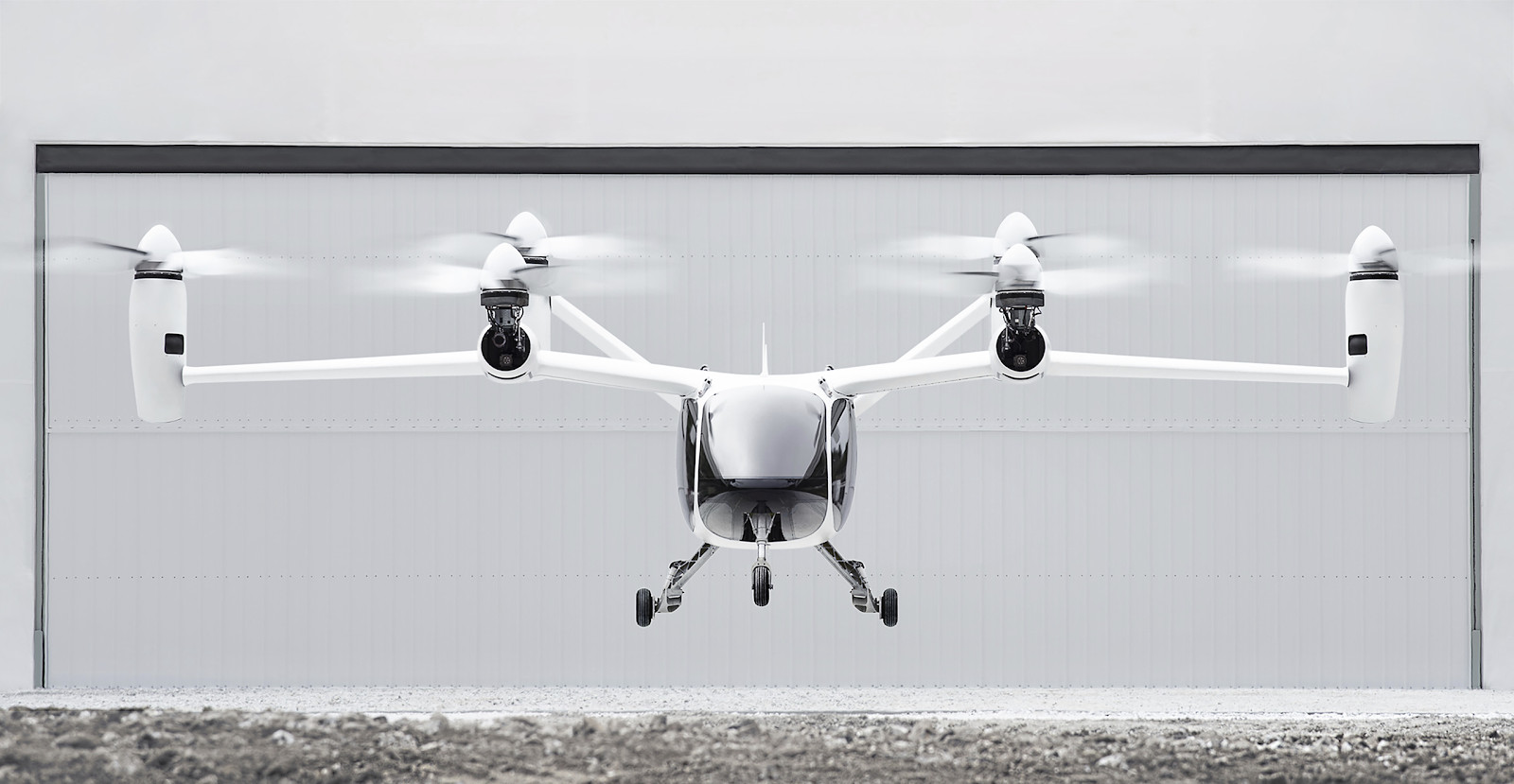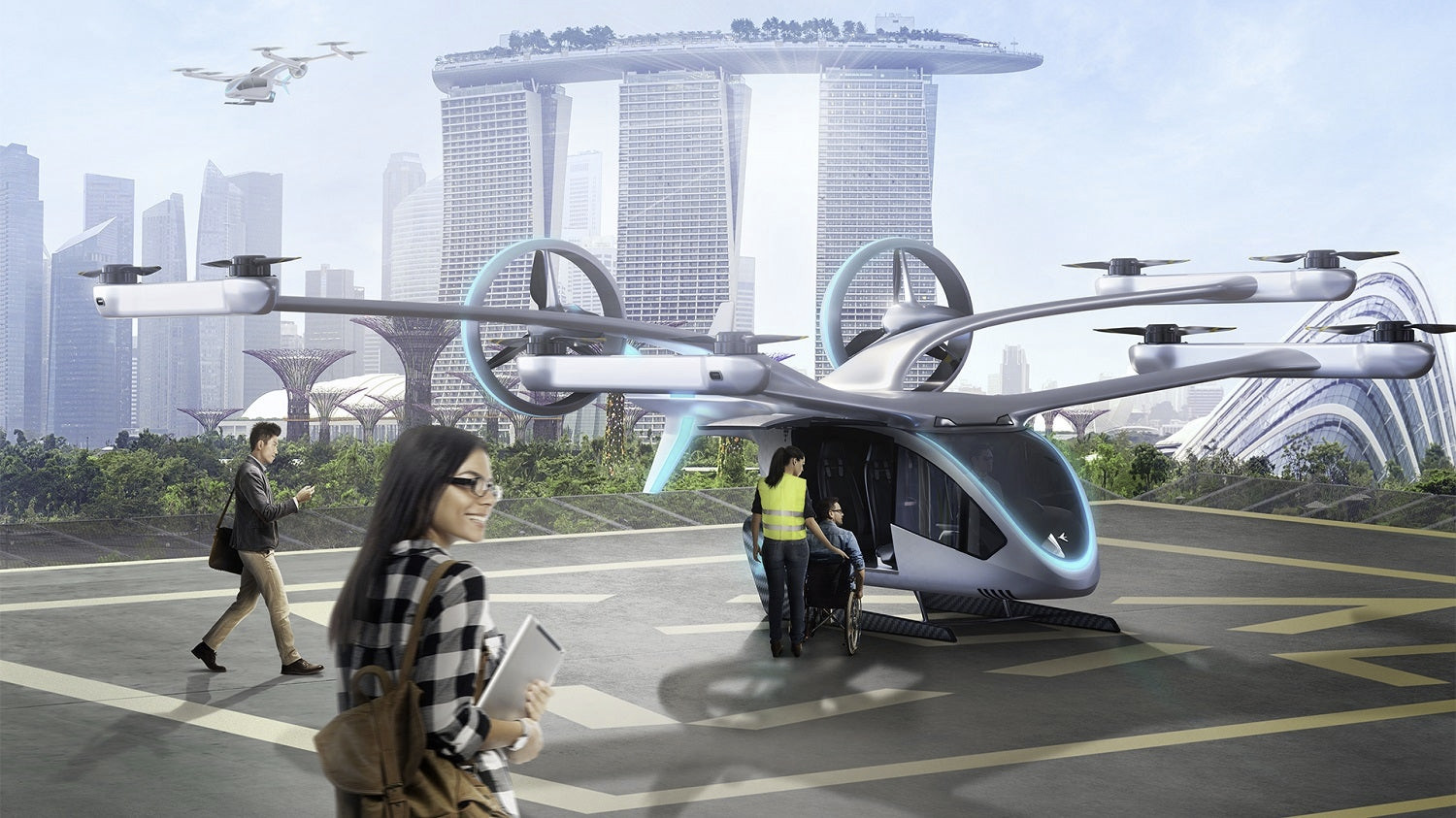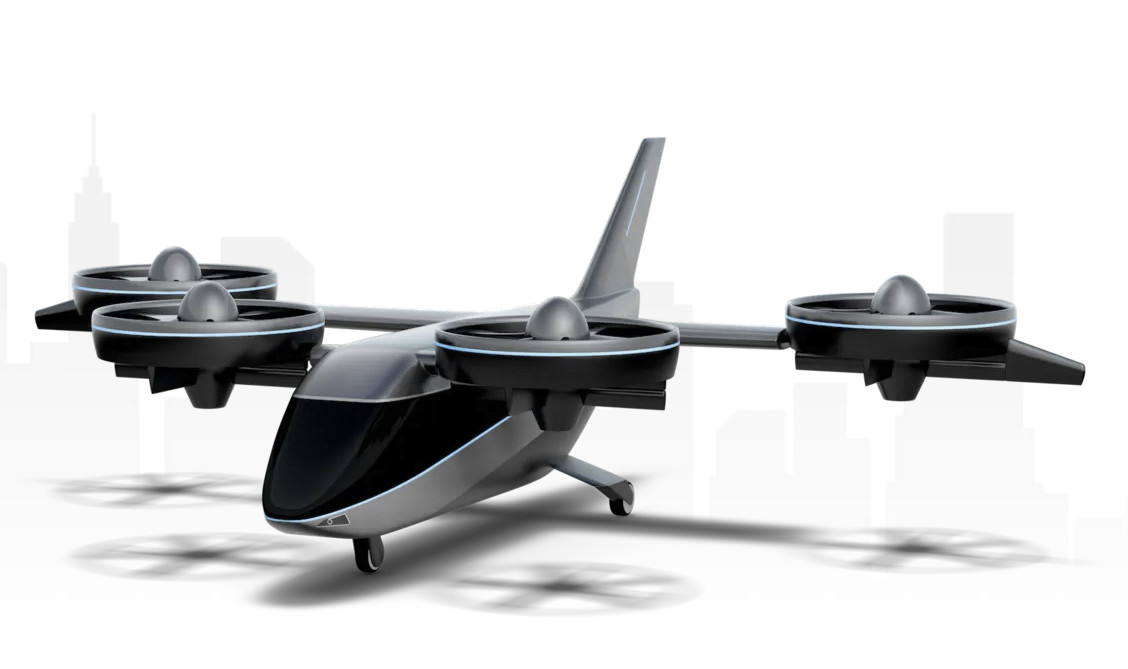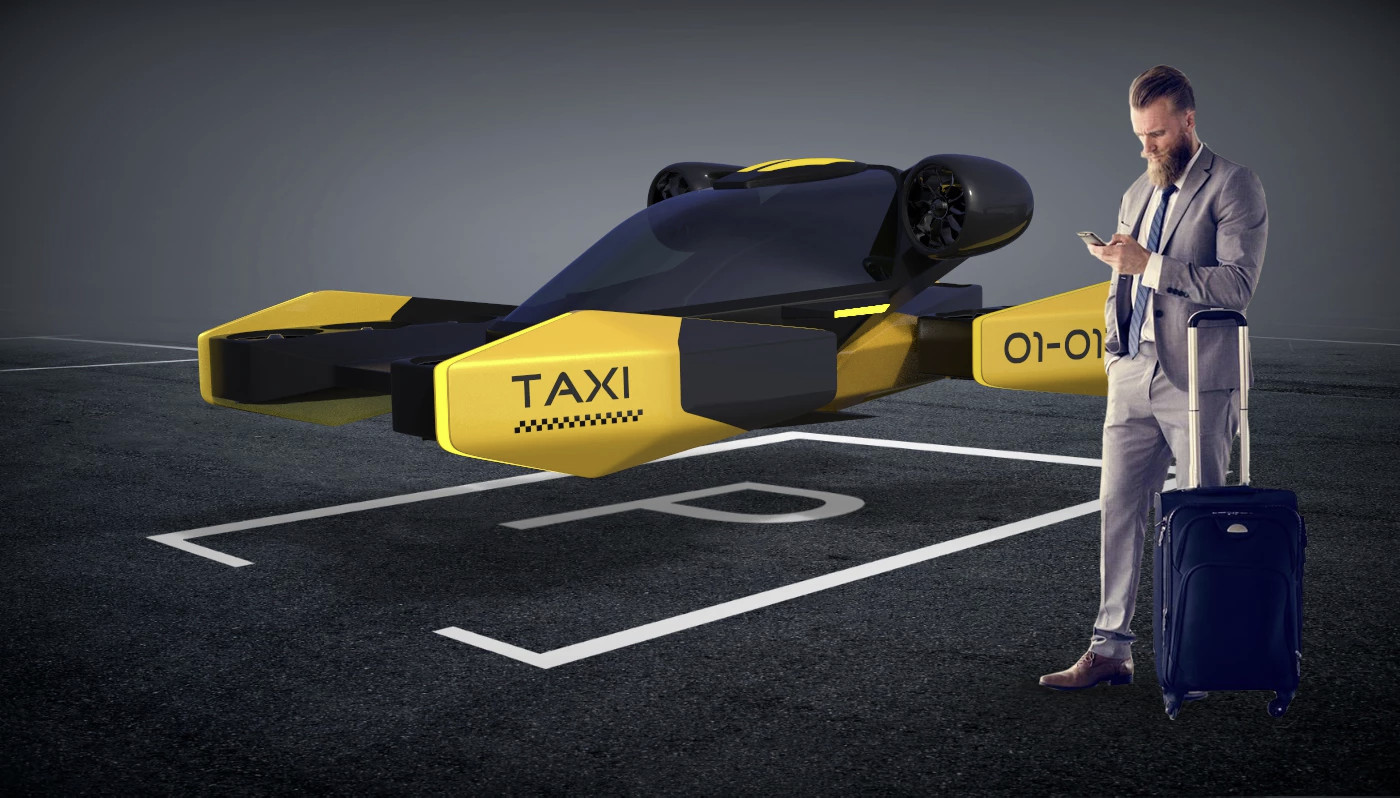
The ground infrastructure of many megacities has long been unable to cope with the flow of cars. New routes help to relieve local areas, but this does not solve the problem of traffic jams, it only softens. Drivers in London spend an average of 9.5 days - 227 hours per year in traffic jams .
There are not so many ideas for a way out of this situation, and all of them are not new. For example, start using the airspace of cities. There are many questions for such a solution. How to ensure the safety of passengers and people on the ground and in homes, especially with drones? Who will do this: the traffic police or the Federal Air Transport Agency? How can you protect yourself from targeted attacks using flying taxis? How will taxis and manufacturers generally agree with the special services on the use of the airspace of large cities? Where and how to organize the take-off and landing infrastructure? What about the noise from the growing fleet of air taxis?
And yet, a number of companies promise that they will launch their air taxis in the 2025-2030 range. The English-speaking press has already developed an abbreviation for such vehicles - eVTOL:electric vertical take-off and landing , electric vertical take-off and landing vehicles. Let's take a look at some of the projects.
Foreword
Modern developments in the field of air taxi can be divided into three large groups:
- Wingless vehicles, equipped only with vertically located motors, which are responsible for both horizontal and vertical movement, as in multicopters.
- Winged "combined" vehicles, in which some motors (or a group of propellers) are responsible for vertical takeoff and landing, while others are responsible for cruising horizontal flight.
- Tiltroplanes, as a rule, are winged: they are equipped with rotary motors, first lifting the device vertically, and then accelerating horizontally.
If it seems to you that this whole air taxi story will end with a couple of pictures and crude prototypes, then no. This is serious. Uber is building its program on Uber Air convertiplanes , and plans to launch pilot routes in Dallas, Los Angeles and Melbourne in 2023.
The program partners include Bell, Boeing, Embraer, Hyundai, Jaunt, Joby, Karem Aircraft and Pipistrel. So the intentions of big business are pretty serious. And will the initiative take off, we'll see.
Vertical aerospace
This British startup is creating an electric combined vehicle for flights between helipads, international flights, as well as for plying between transport hubs and airports. Will take on board 4 people (+ pilot). The maximum range at a speed of 240 km / h is 160 km.
In fact, this is an alternative to helicopters: faster and quieter, probably somewhat cheaper per kilometer of flight. But in general, this is a service for the rich. The market is small, prices will be appropriate. There is no question of unloading roads.
Joby Aviation
Startup (American, partner of Uber Air), hilling the field of electric convertiplanes. The concept is the same: a pilot and four passengers. That is, the market niche is the same as that of helicopters. The characteristics are higher than those of the brainchild of Vertical Aerospace: the range is up to 240 km, and the speed is up to 320 km / h.

The prototype has been flight-tested and certified by the US Federal Aviation Administration for three years.
Lilium
A German company that creates a compact and unusual-looking tiltrotor on impellers: as many as 36 electric motors are built into the wings. This is also a niche product, ready to squeeze out helicopters.
Boeing
One of the partners of the Uber Air program. So far, not much is known about their development, and it looks very crude:
This flying bed frame is a two-seater combination apparatus. It's hard to say what the production design will look like. It is also planned to create a four-seater version. Flight range - up to 80 km.
Overair
Another partner of Ubera Air, a subsidiary of the American Karem Aircraft, which creates prototypes of convertiplanes for the US Army. The company offers the concept of such a pepelats:

Nothing new: a pilot and four passengers, speed 240-320 km / h, range up to 160 km. No zest.
Embraer
The Brazilians (partners of Uber Air) showed their imagination in design and created Eve (formerly DreamMaker) - a project of an anime multi-propeller combined air taxi.


This electro-dragonfly will be able to fly both in manned mode and unmanned. Four passengers with luggage, wheelchair accessible. Flight range up to 96 km, cruising altitude - 800-1200 m, total weight - 1 ton.
Bell
Last year, this famous aircraft company (another Uber Air partner) rolled out a prototype of the six-screw Nexus convertible aircraft.
However, since then the concept has changed somewhat, now the Nexus will be produced in a four-screw version. The car will be able to fly in electric or hybrid mode.

Hyundai
The Koreans (again Uber Air) showed the S-A1 combined aircraft concept.
The essence is the same: a high-speed (290 km / h) four-seater tiltrotor with a flight range of up to 100 km at an altitude of 300-600 m.


It is planned that at first the vehicle will be manned, then it will be made unmanned.
Hoversurf
The startup , founded by the Russian, has almost completed the creation of a two-seat combined air taxi with an impressive range of up to 300 km and speeds of up to 250 km / h. According to calculations, the cost of 1 km of flight will be $ 0.29.

Volocopter
The German company creates ultra-small two-seat electric drones. They look sweet and somewhat comical. Last October, their eVTOL became the world's first to be tested in an urban setting, in Singapore. And this is how the concept of the VoloCity car looks like (at the very end):
Volocopter air taxis are designed for relatively short flights at low speeds.
EHang
The original Chinese pepelats is designed to chop your legs into minced meat: 16 screws in eight groups are located around the perimeter of the machine at hip level.

With maximum load, the baby can fly 35 km at a speed of 160 km / h. Available in single and double versions. Can fly without human assistance. Charges from an outlet in an hour.
SkyDrive
Japanese public-private initiative to create an ultralight eVTOL. So far, the SD-03 prototype is far from the level of a car suitable for use as an air taxi, but the groundwork is already there.
And this is how the concept that is planned to be created looks like:

According to the plan of the engineers, this two-seater flying scooter will fly at a speed of 60 km / h for a distance of up to 20-30 km.
So far, most air taxi developments have followed the path of fairly large, four-seater manned vehicles, with numerous motors and propellers to prevent a crash in the event of one of the motors failing (hello birds). Many manufacturers are announcing the drone feature, but this is in the uncertain future.